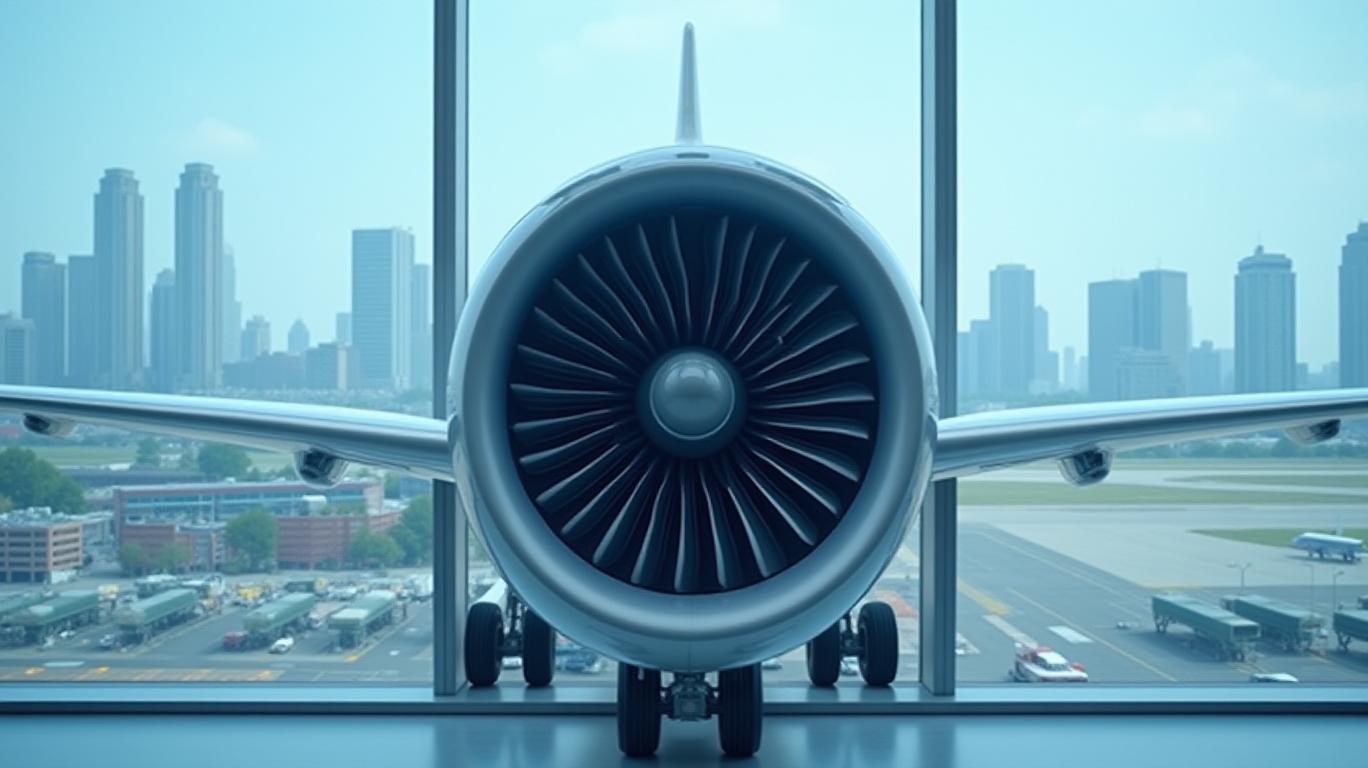A New Chapter in US Aerospace Trade: Navigating the National Security Probe
The U.S. Commerce Department’s recent Section 232 national security probe into imported commercial aircraft, jet engines, and components marks a pivotal moment for the aerospace industry. Launched in May 2025 but only later disclosed, the investigation underscores the Trump administration’s aggressive use of trade tools to shield domestic industries from perceived threats. For investors, this move raises critical questions: How might tariffs and trade policies reshape the sector’s economics? Which companies stand to gain or lose? And what does this mean for global supply chains and U.S. competitiveness?
The Legal and Economic Backdrop
Section 232 investigations, rooted in the 1962 Trade Expansion Act, authorize the president to impose tariffs or quotas if imports threaten national security. The probe targets aircraft and engines—a sector that generates over $135 billion in annual U.S. exports, underpinning a $75 billion trade surplus, the largest of any U.S. industry. The probe’s focus on foreign subsidies and predatory practices highlights concerns that rivals like Airbus (EAD) and Rolls-Royce (RR.L) are unfairly supported by their governments, undermining

Immediate Impacts and Industry Responses
The probe’s retroactive disclosure has left stakeholders scrambling. Airlines, already strained by rising costs, face higher tariffs on imported parts. Delta (DAL), for instance, has warned of potential financial strain from tariffs on aircraft deliveries. Meanwhile, manufacturers like Boeing and Airbus face conflicting pressures: Boeing pays 10% duties on parts from Italy and Japan, while Airbus, which builds planes in Alabama, incurs tariffs on U.S.-assembled aircraft due to foreign-sourced components.
The Aerospace Industries Association (AIA) has urged policymakers to balance national security with global competitiveness. CEO Eric Fanning emphasized the sector’s reliance on a “highly integrated global supply chain,” which existing tariffs—like the 10% duty on most imports outside the 1979 Civil Aircraft Agreement—already strain. The AIA’s stance reflects broader industry concerns: tariffs risk stifling innovation and pricing U.S. manufacturers out of global markets.
Broader Trade Policy Trends
This probe follows a pattern of Section 232 actions under the Trump administration, including tariffs on steel (25%), aluminum (10%), and automobiles (25%). The strategy, framed as protecting national security, has drawn criticism for its economic costs. For example, U.S. steel tariffs led to higher manufacturing costs without significantly boosting domestic production. The aircraft probe risks similar unintended consequences, particularly for airlines like United (UAL), which already face operational disruptions from rising expenses.
GE Aerospace (GE), a major engine supplier, has highlighted the sector’s dependency on duty-free policies to maintain global leadership. Its CEO, Larry Culp, stressed that tariffs could erode the U.S. aerospace industry’s competitive edge, as rivals in Europe and Asia could retaliate or accelerate domestic production.
Investment Implications
The probe’s outcome hinges on two factors: whether the Commerce Department deems imports a national security threat, and what remedies it proposes. Key scenarios include:
1. Higher tariffs: A 25% tariff on aircraft and engines, akin to auto tariffs, could squeeze airline profits and boost demand for U.S. manufacturers if foreign competitors face retaliation.
2. Exemptions or deals: The U.K.-U.S. agreement granting Rolls-Royce duty-free access shows the administration’s willingness to carve out exceptions. Investors should monitor similar bilateral talks.
3. Supply chain reshoring: Companies may accelerate localization of production to avoid tariffs, benefiting U.S. parts suppliers but raising costs overall.
Conclusion: A Delicate Balancing Act
The Section 232 probe into aircraft and engines presents a high-stakes test for U.S. trade policy. While tariffs might shield domestic manufacturers in the short term—Boeing’s stock could rally if trade barriers limit Airbus’s U.S. sales—the long-term risks are profound. The sector’s $135 billion export engine relies on global collaboration; tariffs could alienate allies, provoke retaliation, and erode U.S. leadership in a $900 billion global aerospace market.
Investors should favor companies with diversified supply chains and exposure to domestic demand, such as Boeing if tariffs protect its market share. However, the broader risk of stifling innovation and raising costs for airlines—already a drag on profitability—cannot be ignored. The probe’s opaque process and alignment with broader protectionist trends suggest caution is warranted. As history shows, trade wars rarely have clear winners—only collateral damage.
The path forward hinges on whether the administration can craft a policy that strengthens national security without undermining the sector’s global competitiveness. For now, the skies remain turbulent.

Comments
No comments yet